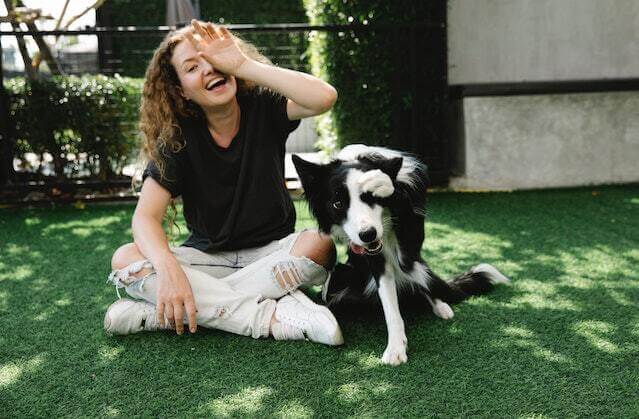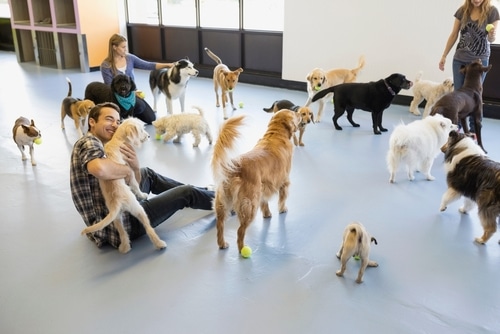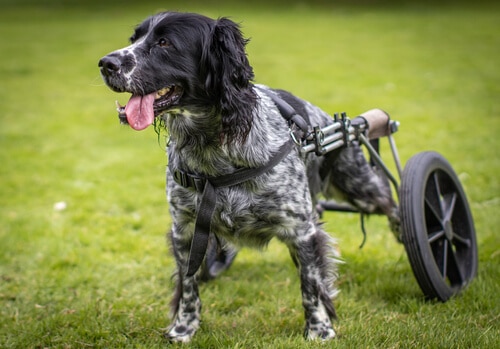Creating An Inclusive Pet Services Business: Catering To Everyone
At Book Your Pet, our mission is to help petpreneurs create inclusive spaces that welcome and support people and pets from all walks of life. Inclusive pet services businesses should consider the needs and wellbeing of pets, pet parents, and employees.
Inclusion refers to creating an environment where all people are truly welcomed, valued, and respected for who they are, regardless of what differences we may have. It's about fully accepting different people and accommodating their needs in your services.
This principle extends beyond human interactions and includes our beloved animal companions. If you run a pet services business, such as a boarding facility, grooming salon, or daycare, it's essential to promote inclusivity within your establishment.
So how do you go about doing this?
Let's explore some valuable strategies and practices to make your pet services business truly inclusive, catering to every furry friend and human companion that enters your doors.
1. Educate Your Staff
One of the fundamental steps towards inclusivity is educating your staff about the diverse needs and requirements of the different pets and people your staff will come into contact with.
For pets, conduct training sessions focused on understanding and interacting with various breeds, sizes, and temperaments. Equip your team with the knowledge and skills necessary to handle pets with special needs, such as those with disabilities or anxiety. By fostering an environment of empathy and awareness, your staff can provide exceptional care to all pets, regardless of their unique circumstances.
When dealing with pet parents, there are a number of things your employees should be educated on to make interactions as friendly and helpful as possible. Some of the things you might want to address in training with your staff will includes:
- Raising awareness of unconscious bias and how to treat all customers equally
- Implementing and educating staff about fair usage policies surrounding your services
- Educating employees on inclusive language (e.g. how to use gender-neutral language, avoiding using terms of endearment that could be deemed offensive, avoiding making assumptions about customers etc)
- How to actively listen with empathy and collect feedback that will enable you to make adjustments to accommodate more people.
Inclusivity isn't just about the customers either. As a business owner, you have a duty of care to your employees and it's your responsibility to create a working environment that makes them feel comfortable asking for what they need.
As an inclusive pet business owner you should understand that people have different ways of processing information, interacting with others, and achieving goals. It's your responsibility to ensure your employees have what they need to do all of these things, that they're conscious of others' needs within the business, and that you're able to accommodate any adaptations that are necessary to support and uplift your team.

2. Create A Welcoming Environment
If your pet business has physical premises, you should make sure this space is designed to be accessible and comfortable for all pets and pet parents. Consider the following aspects for removing barriers to participation:
Infrastructure:
Install ramps or lifts to accommodate pets and pet parents with mobility challenges. As an inclusive business owner, you should ensure that all areas are easily accessible, including entryways, play areas, and grooming stations.
Lighting And Sound:
Pay attention to lighting and sound levels, pets and parents with sensory sensitivities may be easily overwhelmed. Create a calming atmosphere by using diffused lighting, soothing music, or white noise machines. You should also consider providing quiet areas for employees and pets who are sensitive to noise to be able to step away when needed.
Temperature Control:
Our four-legged companions come in all shapes and sizes. They also come with varying lengths and thicknesses of coats. Maintain a temperature range suitable for different breeds and seasons. Provide heated areas for pets sensitive to cold and well-ventilated spaces for those prone to overheating.
If you're a dog walker or a dog trainer and spend a lot of your time outdoors, it's particularly important to be able to identify when the weather is putting pets in harm's way. Understanding the different breeds and how they react differently to different levels of heat will enable you to make sound decisions on adjustments to the service you can provide on any given day, for the benefit of the dog's health.
3. Tailor Services For Individual Needs
Always recognize that pets and people have unique requirements, and providing personalized services can significantly enhance their experience. Consider these strategies:
Customized Care Plans:
Develop individualized care plans for each pet, based on age, breed, health condition, and preferences. This may include specialized feeding schedules, exercise routines, or socialization strategies.
When allocating team members to care for pets, take into consideration their skills and how their individual qualities can be paired with duties to enhance the level of service you provide. Instead of focusing on what your employees CAN'T do, look at what they CAN do and make adjustments to their roles to allow them to flourish and bring unique enhancements to your services.
Sensory Enrichment:
Offer sensory enrichment activities tailored to different pets. Incorporate interactive toys, scent stimulation, and gentle massages to engage and relax pets during their stay.
Quiet Spaces:
Designated quiet areas within your facility where pets can retreat when they need a break from social interactions are essential for making them feel safe and calm. These spaces can be particularly beneficial for shy or anxious animals, especially those recovering from traumatic experiences prior to rescue. By offering these spaces you can play a massive part in the personal growth and development of the pets in your care.
When it comes to your employees, remember that not all needs are visible and not everyone will want to disclose their needs to their employer straight away. You need to build a trusting relationship and demonstrate that you are open to listening and accommodating everyone's needs. This will help your employees feel safe and more forthcoming with asking for accommodations to their needs.
Quiet spaces for staff who might be neurodivergent, who have conditions such as ADHD that affect their ability to concentrate will benefit from a space where they can be free from distraction and calm their minds. Similarly, quiet spaces can offer employees with anxiety a place to step away from high-pressure situations and shift away from their anxious thoughts allowing them to return to a place of quiet and calm when needed.

4. Embrace Diversity
Promoting a culture of inclusivity and acceptance within your business doesn't have to be difficult. As a business owner and a team leader, it's your responsibility to create a climate where people feel comfortable talking about their differences and disabilities.
Staff Diversity:
Encourage diversity among your employees. Hiring individuals from different backgrounds and experiences can foster an inclusive atmosphere and broaden perspectives.
You should also encourage open conversation among your employees (ensuring that this conversation also remains conscientious of everyone's needs). Set an example by sharing stories of your own challenges and how they've been a part of your personal growth will encourage others to do the same.
Language Accessibility:
Ensure that your communication materials are accessible to everyone.
Digital materials including your website, brochures, and forms, should be available in multiple languages. This accommodates pet owners from various cultural backgrounds.
When publishing video content or facilitating video calls, make sure closed captions are available to make them accessible to viewers who are hearing impaired. Also, ensure that your alt descriptions on images are updated and accurate to enable them to be described by e-readers for people with visual impairments.
Print materials should be available in large print and braille versions, as well as being available in multiple languages.
As previously addressed, you should also promote inclusivity in verbal articulation among your teams, ensuring they are using language that accommodates their colleagues and customers.
Community Engagement:
Establish partnerships with local organizations and shelters that focus on promoting inclusivity and animal welfare. Support events and initiatives that celebrate diversity in the pet community and make a real difference in the lives of pet parents and their fur babies.
Summary
Inclusivity isn't limited to human interactions; it extends to the animal world as well. By implementing these strategies and practices, you can transform your pet services business into an inclusive space where every pet, pet parent, and employee feels welcomed, valued, and well-cared for.
Creating a positive and inclusive environment will not only enhance the experience for pets and their owners but also position your business as a leader in promoting equality and compassion within the pet services industry.
Let us embrace diversity, celebrate our furry friends' uniqueness, and ensure they receive the exceptional care they deserve.
Book Your Pet is dedicated to championing diverse and inclusive pet services. Our upcoming business membership is packed full of helpful guides and courses to help petpreneurs establish themselves in all aspects of a business. Build and grow your pet business with ease. Register for the Book Your Pet Membership today.

